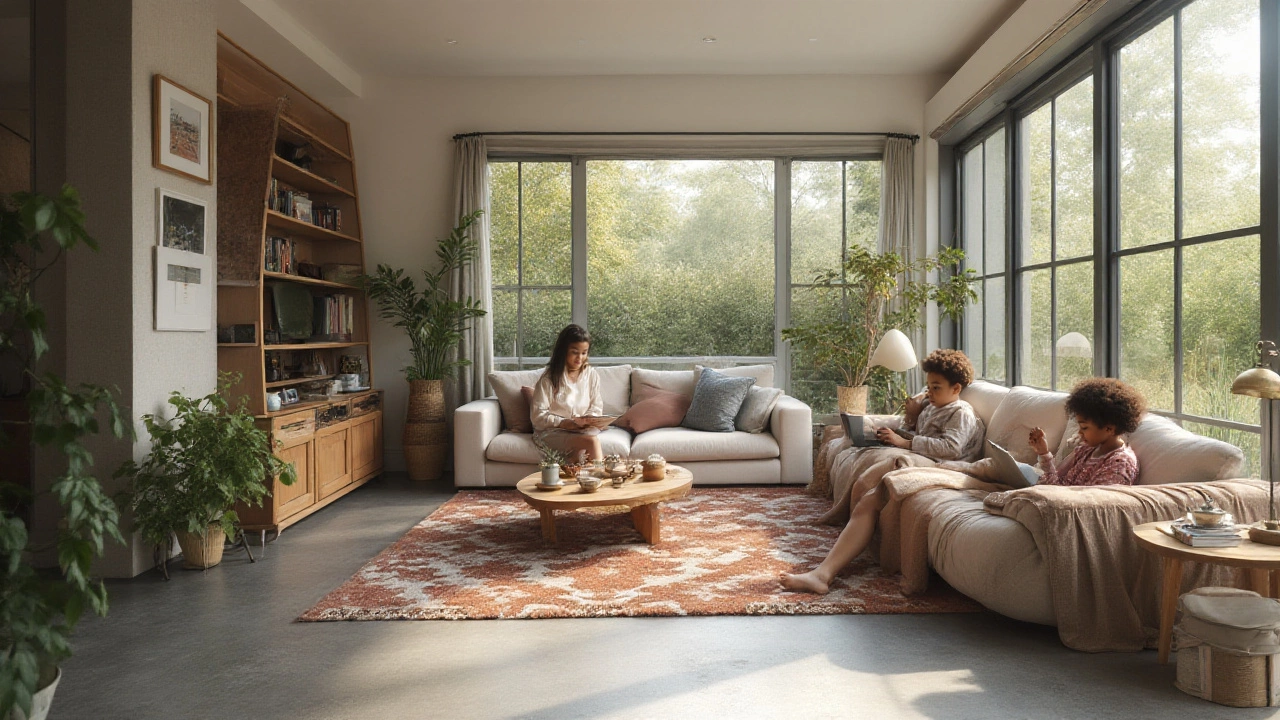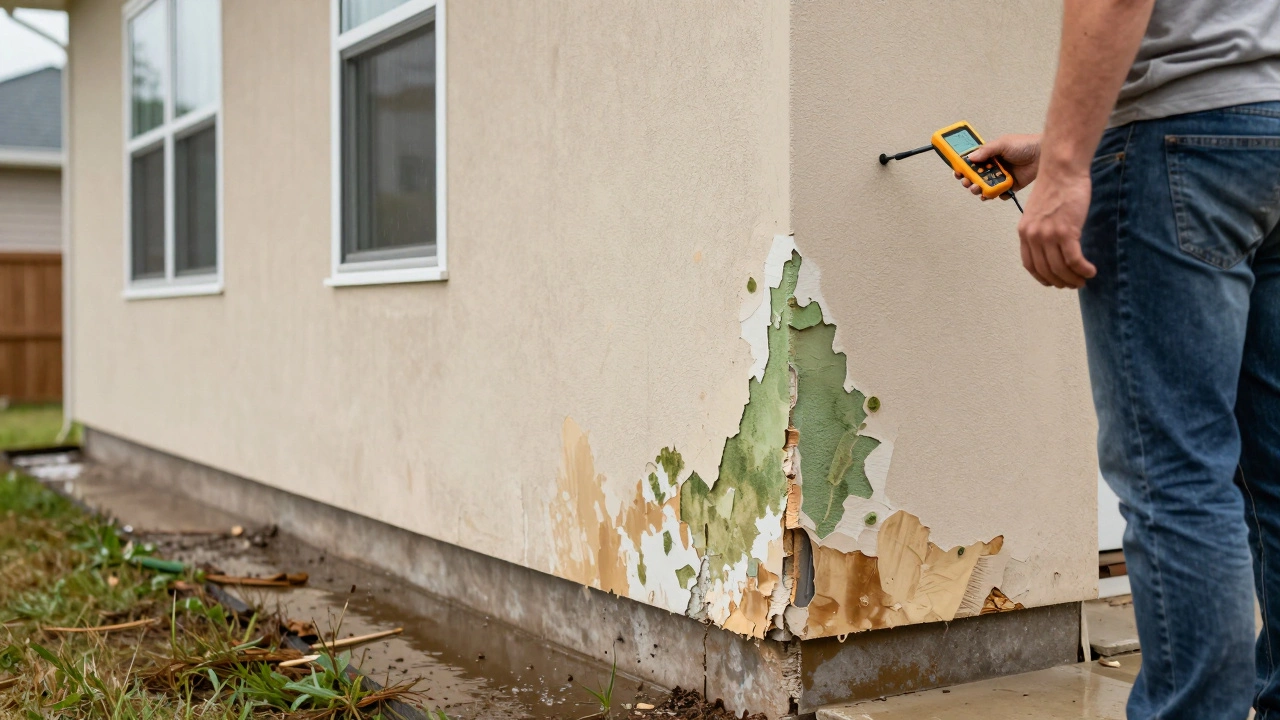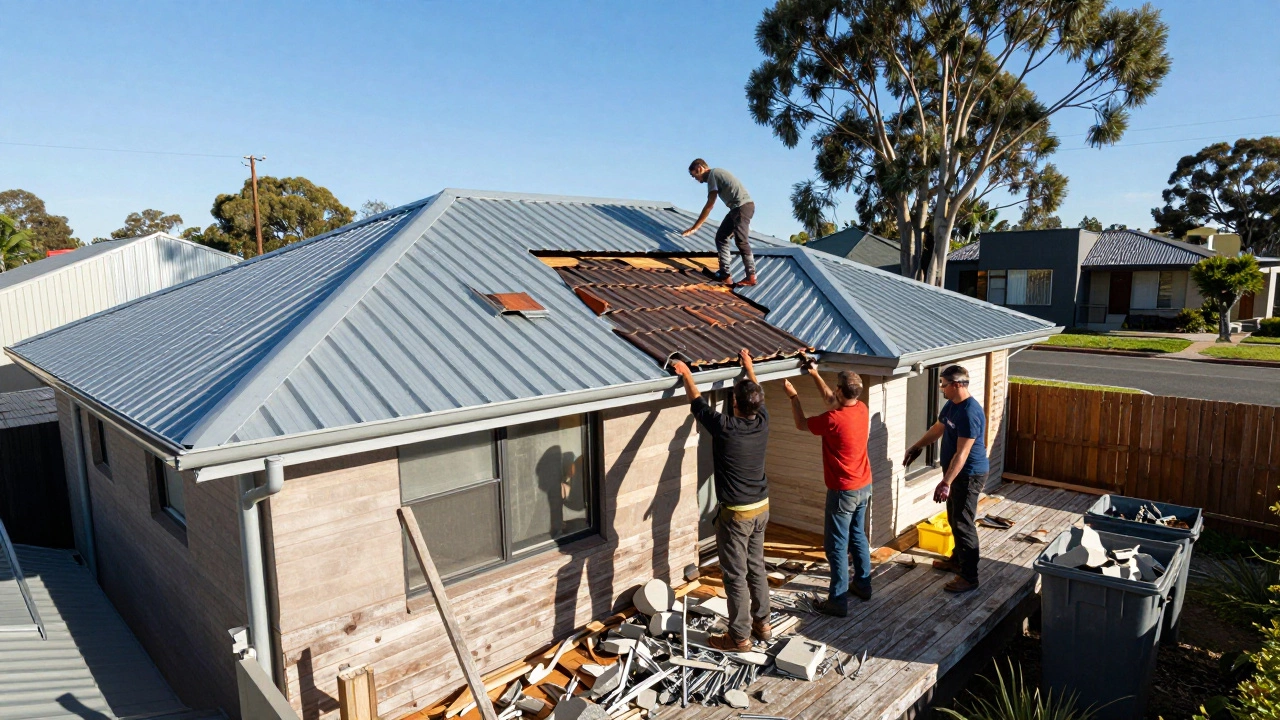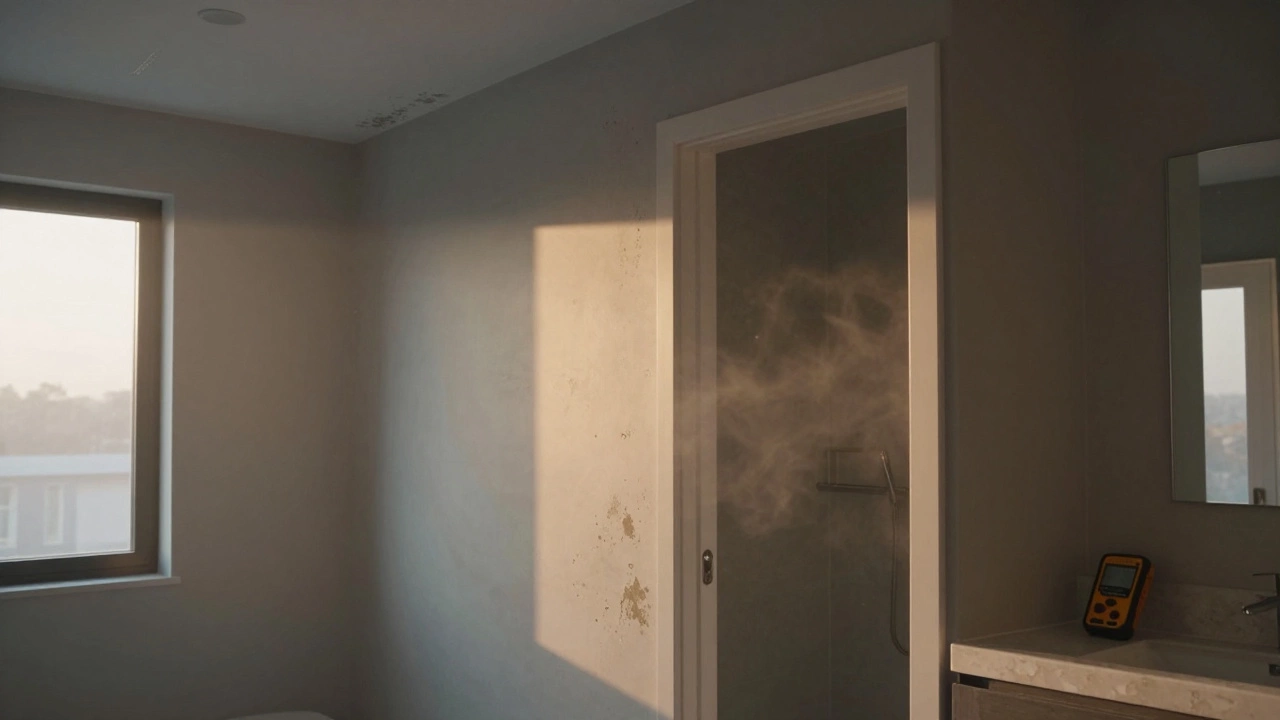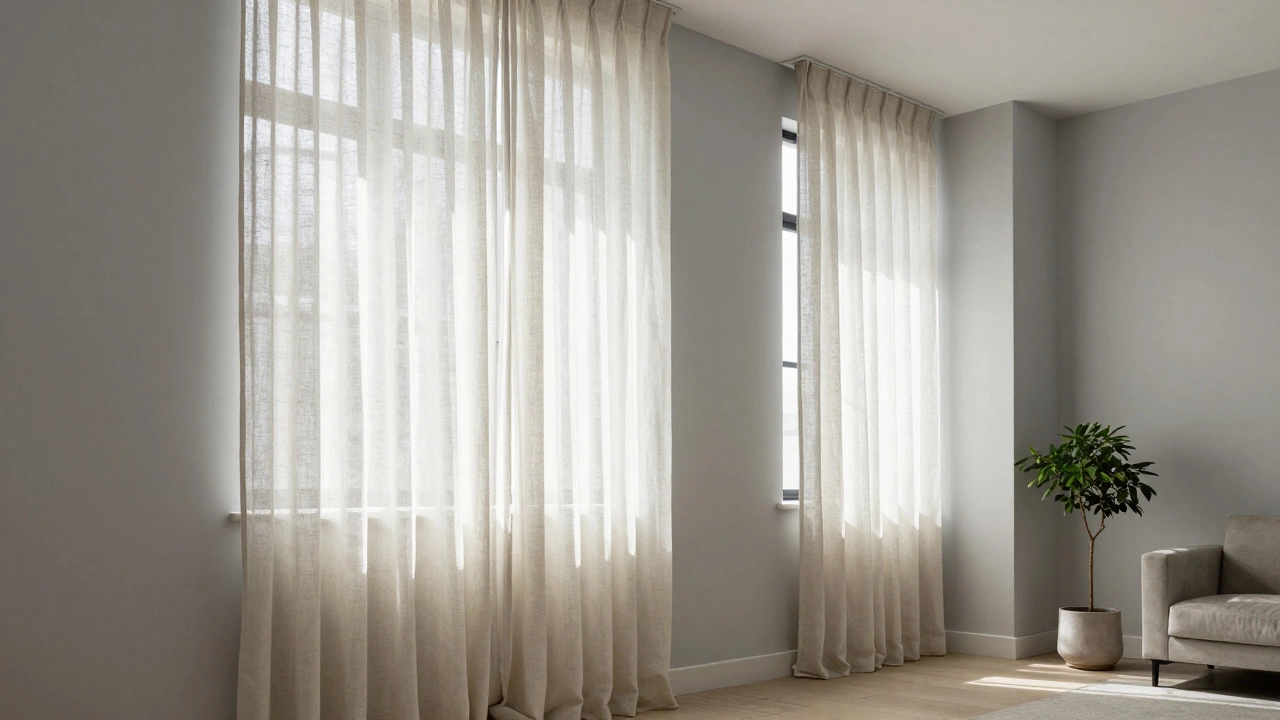Most people don’t even think about flooring until they start tripping over mismatched surfaces. Suddenly, the seams between the living room’s carpet and the hallway’s laminate become glaringly obvious. Some swear by the idea that sticking with the same flooring everywhere makes a house feel bigger and flow better. Others argue for variety—who wants hardwood in the bathroom? This debate is as hot as the question of open versus closed kitchens, and the answer is less obvious than you might expect.
The Appeal and Logic Behind Uniform Flooring
Walk into the average modern home tour, and you’ll spot a common theme: the floors look the same from room to room. This isn’t just a design fad—it’s actually rooted in some pretty practical ideas. The biggest reason people choose uniform flooring? Space. Floors with no transitions make rooms look bigger and more connected. It’s like a visual magic trick. Instead of the eye stopping at the line where tile meets wood, the look just keeps rolling, making the place feel expansive—especially valuable in open-concept homes.
There’s more. With the same flooring, you dodge trip hazards, especially helpful for kids, seniors, or anyone who doesn’t want to stub their toe in the night. Cleaning and maintaining just one type of floor saves time (and money on supplies). Instead of storing special cleaners for tile, wood, and carpet, you stock up on stuff for just one material. Simple.
Did you know that open-plan living only became a mainstream trend after the 1980s? Before that, homes were chopped into specific rooms, each with its own “task”—and often its own flooring. Now, as floor plans open up, a single flooring choice feels almost necessary to maintain that uninterrupted vibe. Data from the U.S. Houzz & Home Study (2024) shows that 62% of homeowners renovating large sections of their homes are choosing the same material throughout, especially when updating entryways, kitchens, and living spaces all at once.
If you’re someone who suffers from decision fatigue, settling on one floor choice removes a whole category of stress. Done—no more worrying if your oak is clashing with your marble-look vinyl or whether your kitchen tile works with your hallway.
Let’s talk value. Real estate agents and designers say seamless flooring can actually pump up resale value. Homes that flow naturally from space to space look “move-in ready,” even if everything else isn’t brand new. As a rule of thumb, the fewer types of flooring you have in visible, connected areas, the easier it is for buyers to picture their own stuff fitting into the space.
Then there’s installation. Going all-in on one flooring covering can cut down on labor costs, since tradespeople stay in their groove and you don’t pay for a bunch of specialty helpers. Plus, you avoid awkward transitions where one kind of floor meets another—which means fewer ugly strips and thresholds that never match.
For those with allergies, ditching carpet in favor of hard flooring (like engineered hardwood or luxury vinyl plank) throughout the home makes a difference. Less dust, easier vacuuming, and a more hypoallergenic environment. In fact, according to the American Lung Association, carpets can trap pollutants and allergens, while hard surfaces—all through the house—are much easier to keep clean and sneeze-free.
But every coin has two sides. Let’s look at why some designers push back hard when clients ask for uniform floors everywhere.
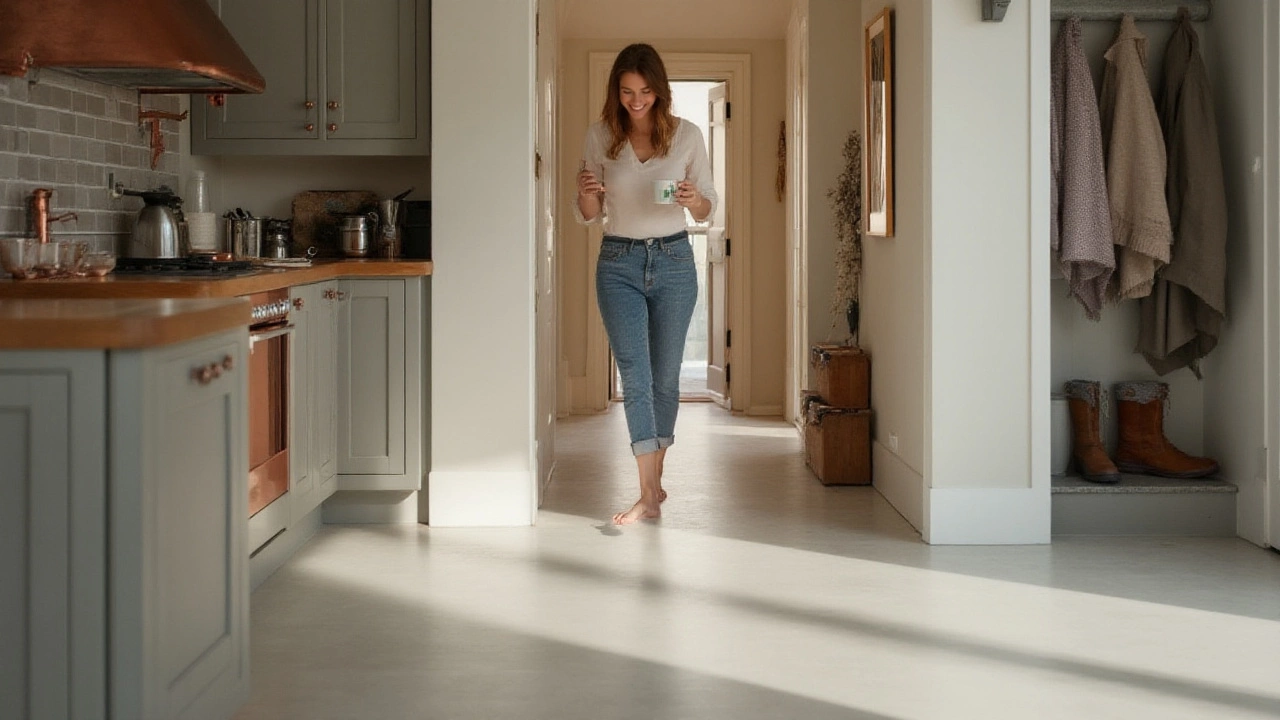
When Different Flooring Just Makes Sense
There’s a reason you probably won’t spot real hardwood flooring inside a shower. Not all flooring materials work for every part of the house, no matter how pretty they look in the showroom. Bathrooms, laundry rooms, and sometimes kitchens are battlegrounds for water, spills, and humidity. Wood planks can warp, carpet gets nasty fast, and certain laminates will bubble or peel.
Tile, vinyl, or other waterproof materials aren’t just a style statement—they’re a must in these moisture zones. For instance, porcelain tiles have a water absorption rate below 0.5%, making them a natural fit for bathrooms. Contrast that with oak or maple, which can expand by several millimeters if it gets soaked (not great unless you love repair bills). If safety is a concern, textured tiles or vinyl add grip where smooth hardwood might send you skating after a shower.
Then there’s comfort. Bedrooms often call for something softer underfoot—think plush carpet or at least a quality rug. Ever stepped out of bed onto a cold tile in winter? Not fun. In fact, according to a 2023 Home Trends Survey, about 59% of homeowners say they prefer carpet in the master bedroom for just this reason. So, you’ll rarely see wall-to-wall hardwood or tile there (unless the home’s in a tropical climate and the goal is to stay cool).
No one wants a house that feels like a hospital. Uniform floors can sometimes have a “flat,” sterile vibe if you don’t break them up with rugs, color changes, or interesting furniture. Mixing up the flooring style or material can add character. You can define spaces without putting up walls. That’s perfect in open-plan homes where you still want your dining area to feel separate from your TV zone. Ever seen a fun patterned tile just at the front door, acting as a focal point? That’s not an accident.
Kitchens are another controversial spot. Some folks swear by the warmth and look of wood floors in the kitchen—no cold feet, easy on the legs while cooking—but spills are tricky. Others won’t go near wood or laminate if their kitchen’s a high-traffic splash zone where pasta sauce and juice boxes fly. Instead, they’ll use a durable tile just in the kitchen, blending into wood or vinyl in the rest of the house with a subtle transition strip or creative inlay.
Here’s a tip: most flooring stores offer transition strips and reducers in materials that look almost identical to the main floor. Want to “fake” a seamless look while still picking the right floor for each room? Use matching or coordinating colors in different materials, so the eye still flows, but you dodge the technical headaches.
Let’s not forget cost. Not all flooring is priced the same. Carpet might be $2-$4 per square foot installed, but authentic hardwood can hit $8-$15 per square foot (or more, if you’ve got expensive tastes). Some folks use a pricier material in public spaces—like real oak in the dining room—then switch to something cheaper (say, high-quality laminate or cushy carpet) in less visible rooms.
We all know homes carry different “jobs” for each room. Mudroom? You want tile that won’t freak out if boots are muddy or dripping. Basement? Most people choose water-resistant vinyl or tile, since basements are magnets for leaks and humidity. Here’s a quick comparison of common flooring materials, their ideal use spots, and costs:
| Flooring Type | Best For | Water Resistance | Cost (Installed, per sq ft) |
|---|---|---|---|
| Hardwood | Living areas, bedrooms | Low | $8 - $15 |
| Engineered Wood | Living areas, bedrooms, kitchens* | Moderate | $6 - $10 |
| Luxury Vinyl Plank | Bathrooms, kitchens, basements | High | $3 - $7 |
| Porcelain Tile | Bathrooms, laundry, mudrooms | Very High | $7 - $12 |
| Carpet | Bedrooms, stairs | Low | $2 - $4 |
*Engineered wood can sometimes be used in kitchens, but quickly mop up spills to avoid issues.
Finally, there’s the renovation question: If you’re living in the house while you update, rolling out the new flooring one room at a time lets you spread out the cost and the chaos. You don’t need to upend your whole house in one go. If you insist on doing everything the same, you might need to move out for a week or more—or tiptoe around unfinished floors.
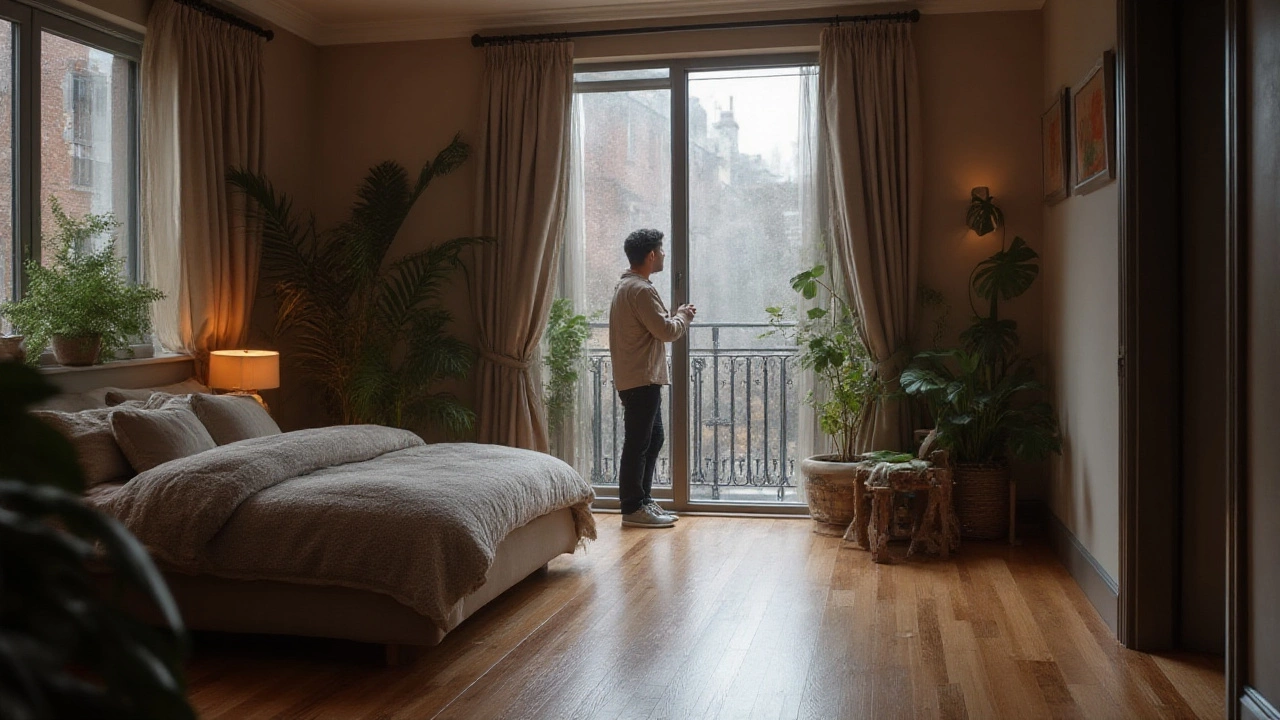
Finding the Sweet Spot: When to Mix, When to Match
If you’re hunting for the perfect answer, sorry: it’s all about what fits your lifestyle and your home. But I’ll break it down with some hard-won tips to make your choice a little easier.
- Think about *how* your family uses each space. Muddy pets? High-traffic entryway? Water-loving kids? Plan accordingly.
- Stick with the same flooring—at least visually—across big, open areas. Living room, hall, and dining flow together? Matching floors create harmony and make them feel huge.
- Use tougher, water-resistant flooring in spaces prone to messes: kitchens, baths, laundry rooms.
- If you crave variety, just make sure transitions aren’t harsh. Lay a fancy border in the threshold, use matching colors, or line up planks so the change is natural.
- For multi-story homes, try for continuity on each level. Most two-story homes will repeat the same main flooring pattern upstairs and down, but switch up materials just where it’s smart—like using tile in the upstairs bathroom.
- Check the light: South-facing rooms or sunny spaces can fade certain flooring types. If the main areas take a lot of sunlight, go with UV-resistant finishes, or you’ll see strange color changes over time.
- If future resale is on your mind, stability matters. Trends come and go, but buyers usually gravitate toward homes that “feel” coordinated. Too many different floor types in sight at once can signal a patchwork job or look dated fast.
- Talk budget up front. One surprise for many: flooring sits near the top of home improvement costs, just after kitchens and baths. Don’t blow your budget on flashy materials everywhere if you can mix in more affordable options tastefully.
Ready for the expert trick? If you want visual unity but have specific needs for certain rooms, get creative with area rugs and runners. These can tie spaces together without you having to redo every inch of flooring—and they’re way easier to switch out than a whole floor if you change your mind.
One last thing—pay attention to noise. Hard floors can bounce sound around like crazy, especially in open-concept homes. If your family room sounds like a basketball court, throw down some rugs or consider carpet in bedrooms and upstairs landings to hush things up.
To wrap it up, the decision to use the same flooring throughout a house isn’t about following a rule—it’s about what looks good, works hard, and keeps your life running smooth. There’s no right or wrong. The best homes get the basics right, then add their own twist. So, take a good look at how you live, dream a little, and don’t be afraid to mix it up if that works for you. Your floors, your call.

